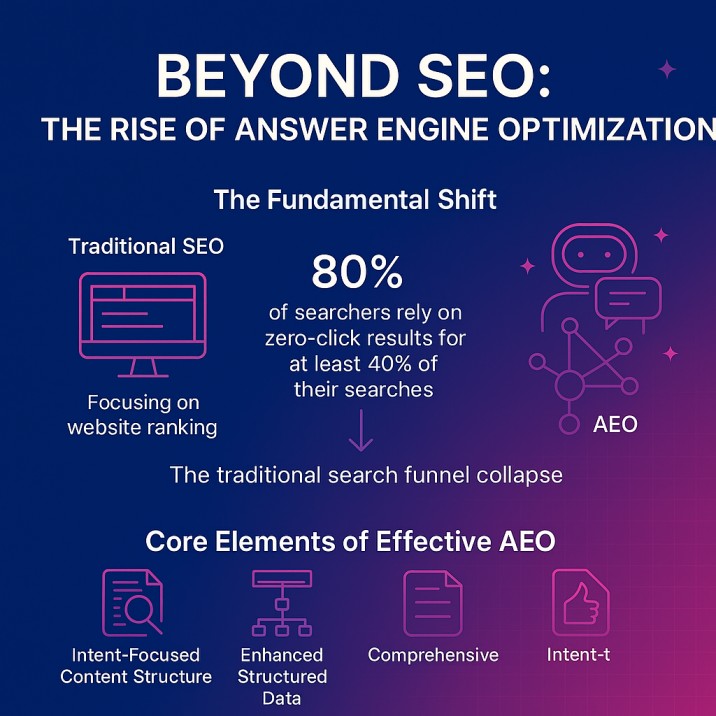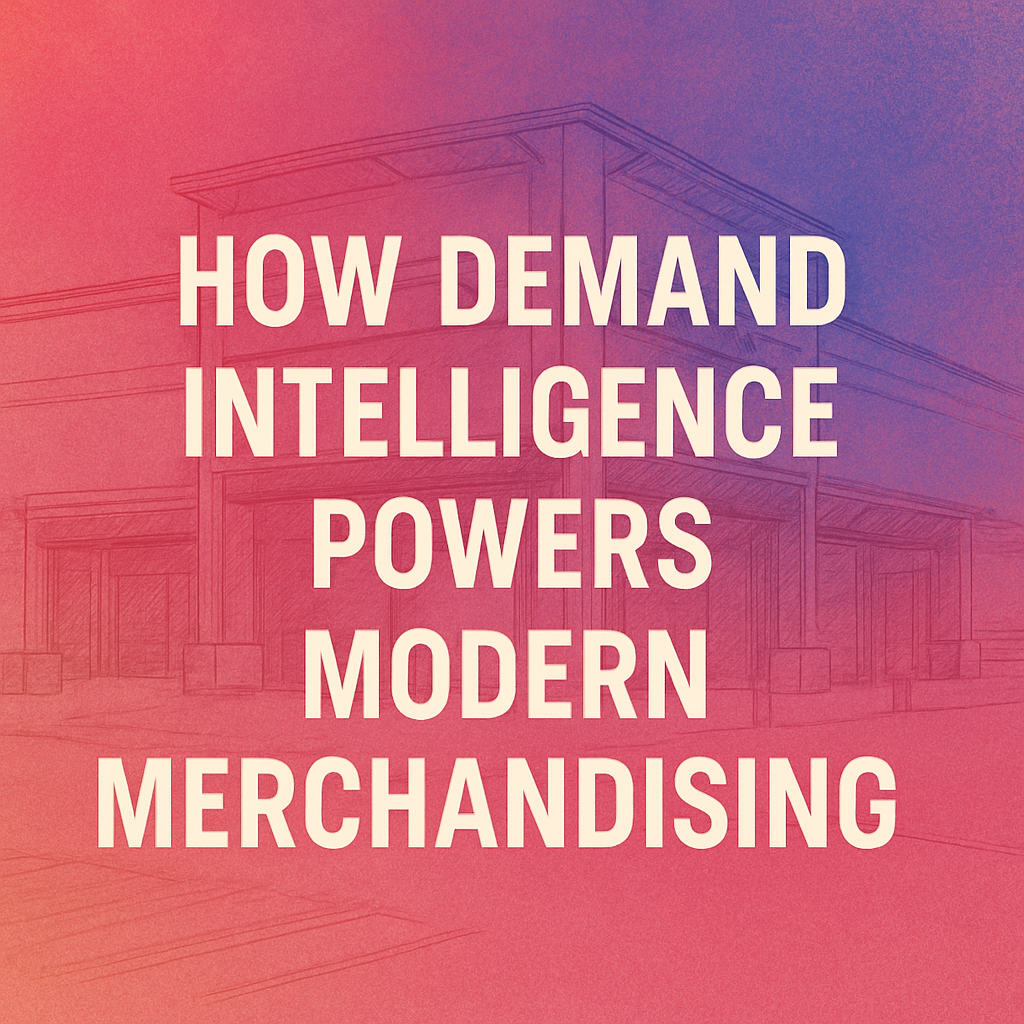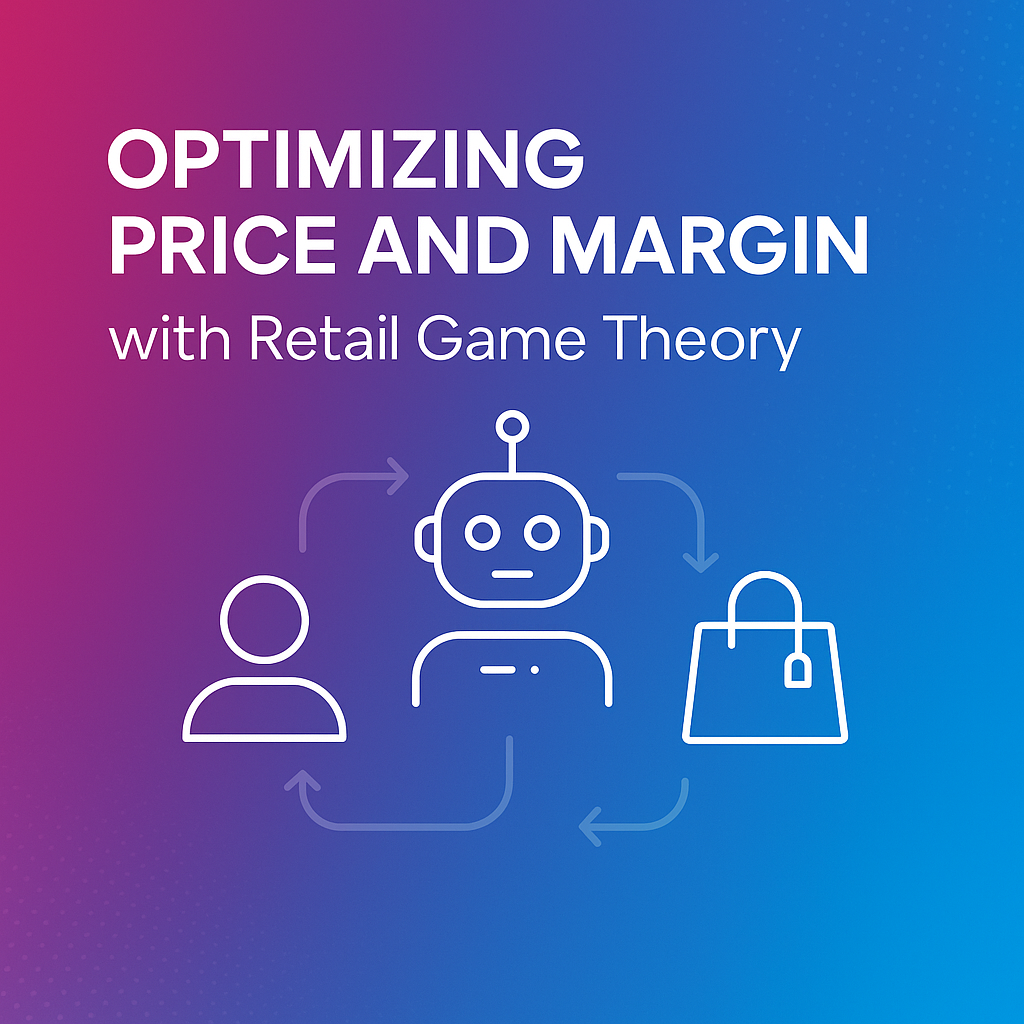Beyond SEO: Why Answer Engine Optimization is Critical in the Age of AI Agents

What is Answer Engine Optimization (AEO)?
Answer Engine Optimization (AEO) is the practice of structuring and formatting content specifically to be extracted, cited, and presented by AI-powered answer engines like ChatGPT, Claude, Perplexity, or Google’s AI overviews. While traditional SEO focuses on ranking in search results pages, AEO aims to have your content directly quoted or referenced when AI systems answer user queries—often without users ever visiting your website.
How Does AEO Differ From Traditional SEO?
Traditional SEO and Answer Engine Optimization (AEO) represent fundamentally different approaches to digital visibility. SEO primarily aims to improve website rankings on search engine results pages (SERPs) through keyword optimization, backlink building, and technical enhancements. The goal is to drive traffic to your website where users can engage with your content.
In contrast, AEO focuses on having your content selected as the direct answer to specific questions posed to AI systems. This often results in a “zero-click” experience where your information is consumed without a website visit. The shift from driving traffic to providing information requires a complete rethinking of content strategy.
| Traditional SEO | Answer Engine Optimization (AEO) |
|---|---|
| Focuses on ranking websites in search results | Focuses on having content directly quoted by AI |
| Optimizes for keywords and search volume | Optimizes for questions and conversational queries |
| Success measured by website traffic | Success measured by brand mentions in AI responses |
| Emphasizes backlinks and technical factors | Emphasizes authority, accuracy, and structured data |
| Content structure aims to engage visitors | Content structure aims to provide immediate answers |
As noted in research by Bain & Company, zero-click results are changing consumer behavior, with 80% of searchers now relying on these direct answers for at least 40% of their searches. This trend has reduced traditional organic web traffic by an estimated 15% to 25%, making AEO an essential component of any modern digital strategy.

Why is AEO Becoming Critical in 2025 and Beyond?
The rise of AI-powered commerce agents, as we explored in our recent article on The Agent Revolution, is dramatically changing how consumers discover and purchase products. When AI agents like Google’s “Shop with AI Mode” handle the entire journey from discovery to purchase, the traditional e-commerce funnel collapses into a single conversation.
In this new paradigm, product information becomes the primary interface between brands and consumers. If your content isn’t optimized for AI understanding and extraction, your products risk becoming invisible to these increasingly influential systems.
What Are the Core Elements of Effective AEO?
Answer Engine Optimization requires a strategic approach focused on providing direct answers in formats that AI systems can easily process. Here are the essential components:
1. Intent-Focused Content Structure
For AEO success, content must be structured to provide immediate answers to specific questions. This means:
- Starting with clear, direct answers before providing supporting details
- Using question-based headers (H2, H3) that match natural language queries
- Breaking down complex topics into digestible sections
- Providing concise definitions and explanations at the beginning of each section
2. Enhanced Structured Data Implementation
Structured data plays a crucial role in helping AI systems understand and extract information from your content:
- Implement FAQPage schema for frequently asked questions
- Use HowTo schema for instructional content
- Apply QAPage schema for community Q&A content
- Consider adopting the emerging /llms.txt standard for AI-friendly content presentation
3. Comprehensive Topic Authority
AI systems prioritize content from sources demonstrating deep expertise across related topics:
- Create content clusters that thoroughly cover all aspects of a topic
- Address the complete spectrum of user questions within your area of expertise
- Include verifiable data, statistics, and properly cited sources
- Build breadth and depth of coverage across your content ecosystem
4. Question-Focused Keyword Research
AEO keyword research differs from traditional SEO by focusing on questions rather than short keyword phrases:
- Identify specific questions your audience is asking
- Research conversational queries that reflect natural language interactions
- Analyze “People Also Ask” boxes related to your topics
- Input questions into AI platforms to see current responses and identify gaps
How is AEO Reshaping Product Information Strategy?
The emergence of agentic commerce, where AI systems mediate the relationship between consumers and products, places unprecedented importance on product information. In this environment, AEO becomes a critical capability for ensuring product visibility.
When a consumer asks an AI agent to recommend “a waterproof travel bag for rainy weather with easy-access pockets,” the agent must be able to identify which products match these criteria. This requires product information that is:
- Comprehensively Detailed: Including all relevant attributes, specifications, and use cases
- Contextually Rich: Explaining when, where, and how products are best used
- Intent-Aligned: Using language that matches how consumers naturally express their needs
- Structurally Optimized: Formatted for easy extraction and comparison by AI systems
What Role Does Demand Intelligence Play in AEO Success?
Successful Answer Engine Optimization requires a deep understanding of how consumers express their needs, questions, and preferences—this is where demand intelligence becomes invaluable.
Stylumia’s Consumer Intelligence Tool employs a proprietary AI-powered Demand Sensing algorithm that analyzes millions of consumer interactions to understand not just what products are popular, but how consumers talk about them. This demand intelligence enables brands to:
- Map the Question Landscape: Identify the specific questions consumers are asking about products in your category
- Align Language with Consumer Expression: Structure product information using the terminology consumers naturally use when describing their needs
- Identify Critical Decision Factors: Understand which product attributes most strongly influence purchase decisions
- Anticipate Emerging Questions: Proactively address new consumer concerns before they impact purchase patterns
By applying demand intelligence to product information strategy, brands can create content that naturally aligns with how consumers express their needs to AI agents, dramatically increasing the likelihood of being referenced in AI responses.
How Can Brands Implement an Effective AEO Strategy?
Implementing an effective Answer Engine Optimization strategy involves several key steps:
1. Conduct an AEO Content Audit
Start by evaluating your existing content through the lens of answer engines:
- Does your content directly answer specific questions?
- Is information presented in a clear, structured format?
- Does your content demonstrate comprehensive topic authority?
- Are you using appropriate schema markup?
2. Develop Question-Focused Content
Create content specifically designed to answer the questions your audience is asking:
- Identify gaps in your current content through question research
- Structure content with clear question-based headings
- Provide direct answers at the beginning of each section
- Follow the FLIP Framework (Freshness, Local intent, In-depth context, Personalization)
3. Implement Comprehensive Structured Data
Enhance your content with appropriate schema markup:
- Apply FAQ schema to question-and-answer content
- Use HowTo schema for instructional content
- Implement Product schema with detailed attributes
- Consider adopting the /llms.txt standard for AI-friendly content
4. Build Topic Authority Through Content Clusters
Develop comprehensive coverage across related topics:
- Create pillar content that addresses broad topics
- Develop cluster content exploring specific aspects in depth
- Link content pieces to demonstrate topical relationships
- Maintain consistent, authoritative voice across all content
5. Monitor and Refine Based on AI Responses
Regularly check how your content appears in AI responses:
- Test relevant questions in AI platforms like ChatGPT and Perplexity
- Analyze which content elements are being cited
- Identify gaps or misrepresentations in AI responses
- Refine content based on how it’s being interpreted and presented
How Does Stylumia Enable Brands to Succeed in the AEO Era?
Stylumia’s demand intelligence platform provides the foundation for creating product catalogs optimized for answer engines. By analyzing millions of consumer interactions, Stylumia helps brands understand:
- The Language of Intent: How consumers naturally express their needs and preferences when seeking products
- Critical Decision Factors: Which product attributes most strongly influence purchase decisions
- Information Hierarchies: How consumers prioritize different types of product information
- Emerging Questions: New concerns or interests arising among consumers in your category
This demand intelligence enables brands to create product information that:
- Speaks the Customer’s Language: Using terminology that aligns with natural consumer expression
- Highlights Decision-Driving Attributes: Emphasizing the factors that most influence purchase decisions
- Provides Context-Rich Information: Explaining when, where, and how products are best used
- Anticipates Consumer Questions: Addressing potential concerns before they become barriers
Through Stylumia’s Consumer Intelligence Tool, brands can transform their product information from basic catalog data into a strategic asset optimized for AI-powered discovery and recommendation.
What Does the Future Hold for AEO and Product Information?
As AI continues to reshape how consumers discover and purchase products, the strategic importance of Answer Engine Optimization will only grow. We expect several key developments in the coming years:
1. Integration of AEO and Conversational Commerce
The lines between answer engines and commerce platforms will continue to blur, with AI systems increasingly facilitating direct purchases based on recommendations. This integration will make AEO a critical driver of commerce success.
2. Rise of Dynamic Product Information
Static product catalogs will give way to dynamic information systems that adapt content presentation based on the specific context, query, and user. This will require more sophisticated approaches to product information management.
3. AI-to-AI Communication Standards
As AI agents increasingly communicate with each other to fulfill consumer needs, new standards will emerge for structured data exchange between systems. Brands will need to ensure their product information is compatible with these emerging protocols.
4. Demand Intelligence as Competitive Advantage
Brands with sophisticated demand intelligence capabilities will gain significant advantages in AEO, as they’ll be able to rapidly align their product information with evolving consumer language and priorities.
Conclusion: The Strategic Imperative of AEO
The shift from SEO to AEO represents more than a tactical adjustment—it’s a fundamental transformation in how brands connect with consumers in the AI age. As AI agents increasingly mediate the relationship between brands and customers, the ability to have your content selected, extracted, and presented by these systems becomes a crucial competitive advantage.
For product-based businesses, this transformation is particularly significant. The collapse of the traditional e-commerce funnel into AI-mediated conversations means that product information is no longer just a backend operational concern—it’s the primary interface between your brand and potential customers.
By leveraging demand intelligence platforms like Stylumia, brands can create product catalogs that not only contain comprehensive information but present it in ways that naturally align with consumer language and priorities. This alignment is the key to visibility and relevance in the age of answer engines and AI commerce agents.
If you want to move from catalogue compliance to catalogue resonance with consumers, reach out here for a free consultation



